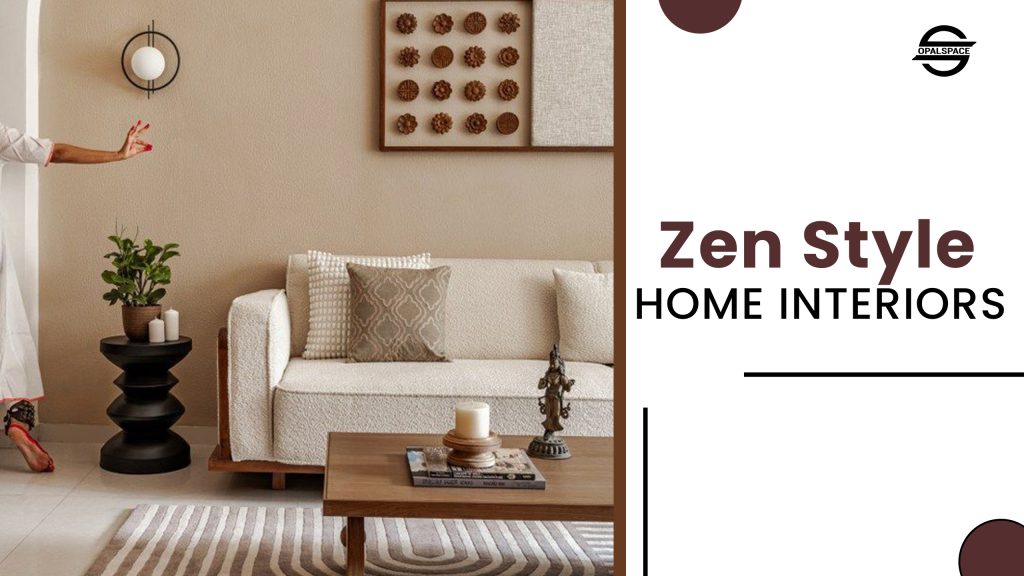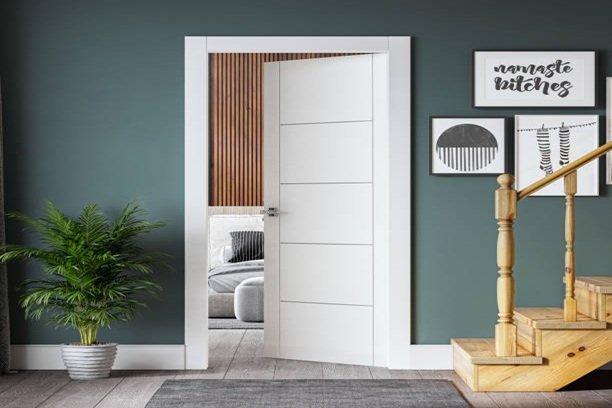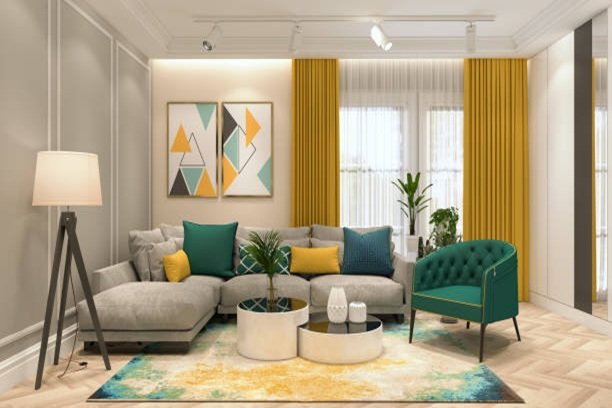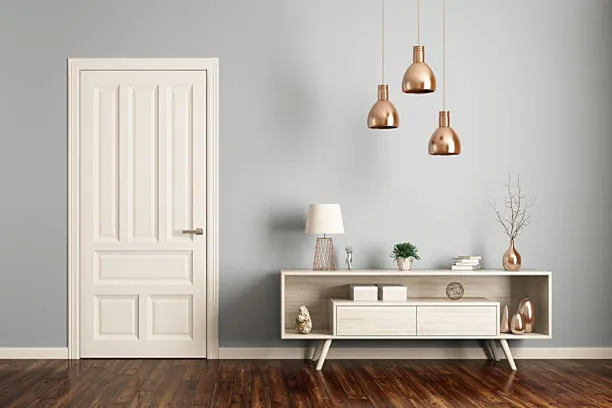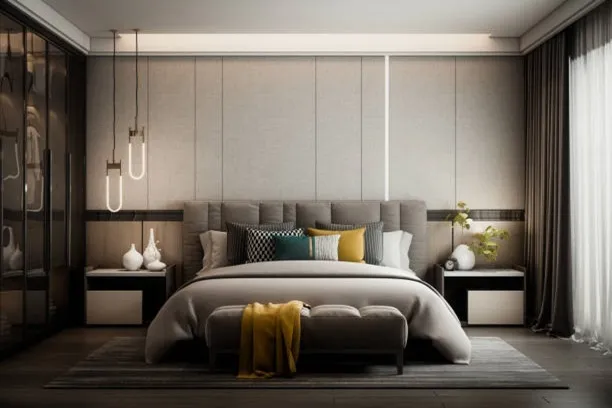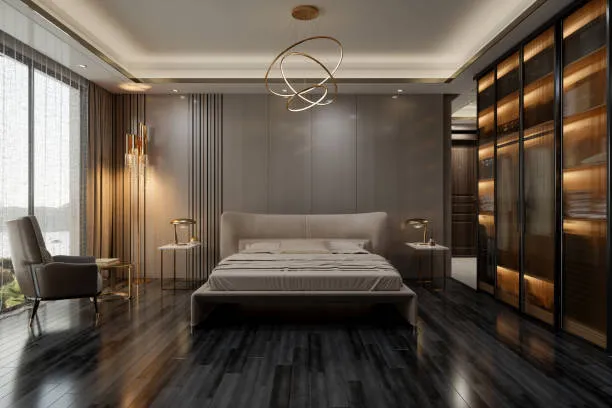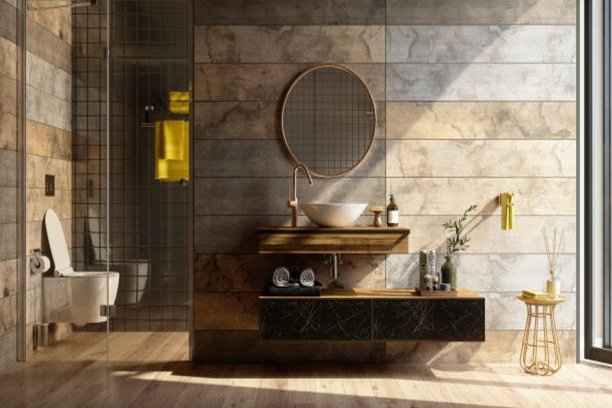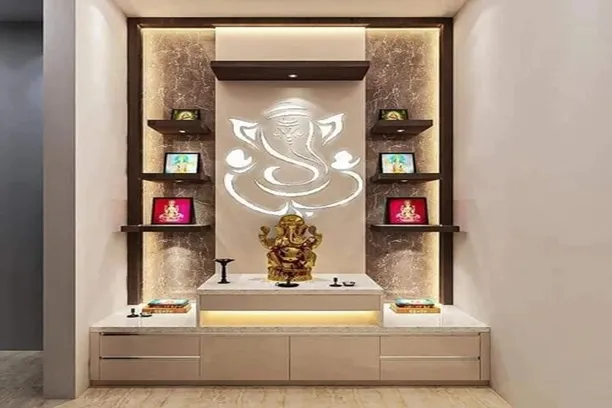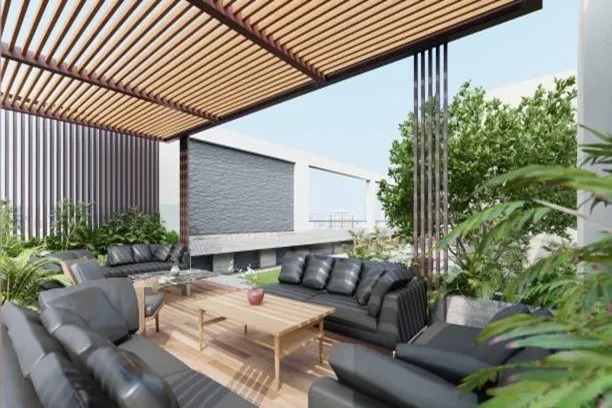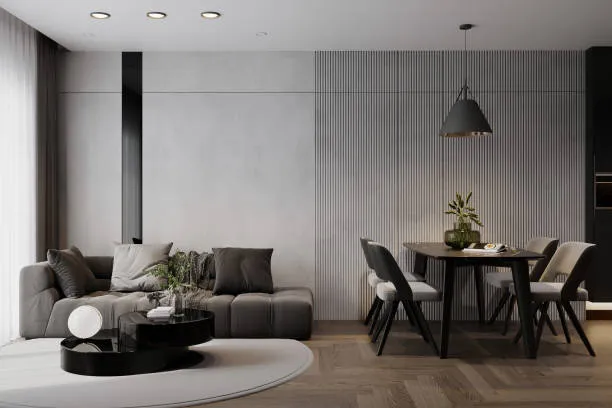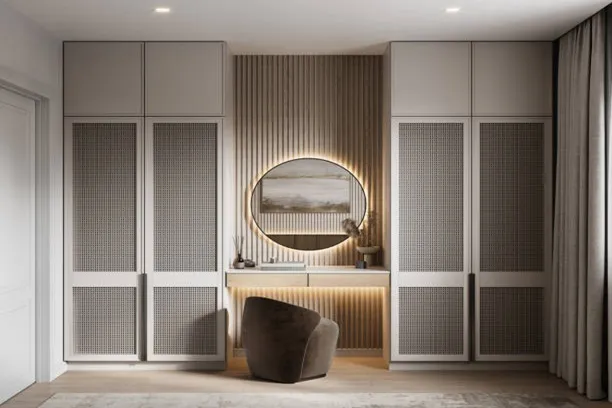Table of Contents
Zen interior design is a style rooted in Japanese minimalism and the spiritual principles of Zen Buddhism. This style of home interiors resonates with simplicity, clarity, and balance. These properties are at the heart of every design decision. It’s a lifestyle that helps you build a calm and clutter-free space where your mind can slow down and breathe.
The core philosophy of Zen design is to eliminate the non-essential. By keeping your surroundings tidy and visually quiet, you’re also creating a mental space that feels light, focused, and peaceful. It might sound ironic to home decor, but it’s the opposite actually. It simply means everything you keep should serve a purpose or spark joy, as Marie Kondo would say.
Zen design carries clean lines, natural materials, and open spaces. These spaces encourage mindfulness, meditation, and harmony with nature. In a Zen-inspired home, every time is thoughtfully placed, and every corner is intentional. The idea is to create a sanctuary that is lively and deeply nurturing.
The core philosophy of Zen design is to eliminate the non-essential. By keeping your surroundings tidy and visually quiet, you’re also creating a mental space that feels light, focused, and peaceful. It might sound ironic to home decor, but it’s the opposite actually. It simply means everything you keep should serve a purpose or spark joy, as Marie Kondo would say.
Zen design carries clean lines, natural materials, and open spaces. These spaces encourage mindfulness, meditation, and harmony with nature. In a Zen-inspired home, every time is thoughtfully placed, and every corner is intentional. The idea is to create a sanctuary that is lively and deeply nurturing.
Zen Design in Indian Homes: Can It Work?
Zen design can absolutely work in Indian homes. In fact, many Indian interiors already reflect Zen-like values through their use of natural materials, connection to spirituality, and mindful living practices. The challenge and the opportunity lie in harmonizing the calm minimalism of Zen with the warmth, functionality, and traditions of Indian households.
Let’s explore how these two seemingly different styles can come together beautifully.
Let’s explore how these two seemingly different styles can come together beautifully.
1. Zen Principles with Indian Functionality

Here’s how to balance the two:
- Go minimalist with a purpose: Declutter surfaces, reduce ornamentation, but retain meaningful elements like family photos, heirlooms, or one handcrafted artefact.
- Prioritise airy layouts: Use light curtains, avoid bulky furniture, and allow for breathing space between objects, especially in smaller Indian flats.
- Functional choices, mindful design: Think of multipurpose furniture, like a low diwan with storage, or a foldable dining set, and keep visual clutter to a minimum.
2. Local Materials like Cane, Cotton Curtains, and Terracotta
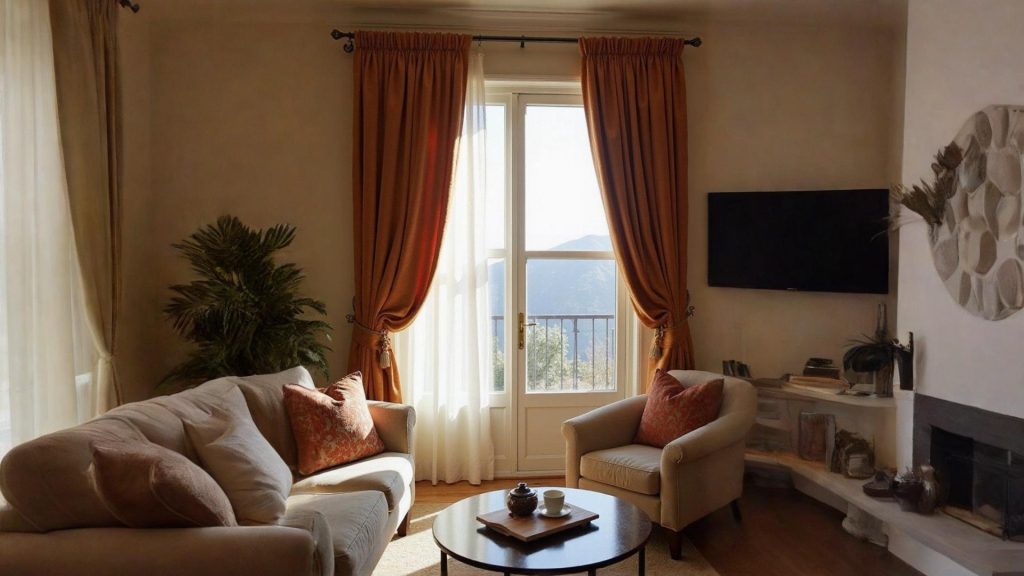
Consider integrating:
- Jute rugs and coir maane or bamboo: It can be used for accent chairs, room dividers, pendant lights, or even wall art. These materials are sustainable and visually light.
- Cotton or khadi curtains: Breathable fabrics in neutral shades like off-white, beige, or grey help create that soft, meditative vibe.
- Terracotta and clay accents: Be it planters, lamps, or vases, earthy ceramics introduce texture without overs: These natural fibres add warmth underfoot and reflect a raw, grounded sensibility.
3. Pooja Corners or Mediation Zones
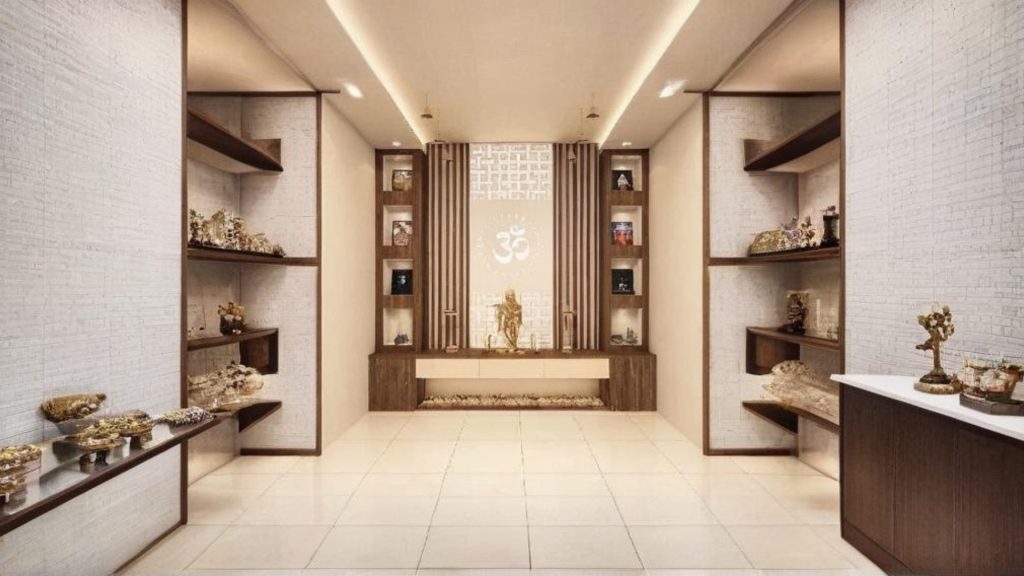
Here’s how you can make it work:
- Designate a clean, quiet area in the home, preferably near a window or in a corner, for spiritual or meditative activities.
- For pooja spaces, opt for a minimal wooden shelf or mandir, brass diya holders, and clean backdrops, like a plain marble top or a white niche wall.
- You can add elements like floor cushions, an incense stand, or even a small water fountain to turn any corner into a calming personal retreat.
Add a Touch of Zen Without a Full Makeover
Here’s how you can start embracing Zen living:
1. Clear Just One Spot First

You don’t have to empty your entire house on a weekend. Start with just one surface, a coffee table, a bedside shelf, or the shoe rack near your door.
- You can remove what you don’t use or like or prefer much.
- You can keep just 1-2 beautiful or meaningful items.
- Wipe the surface clean and leave some empty space. It will feel instantly lighter.
2. Add Floor Cushions or Floor Lamps
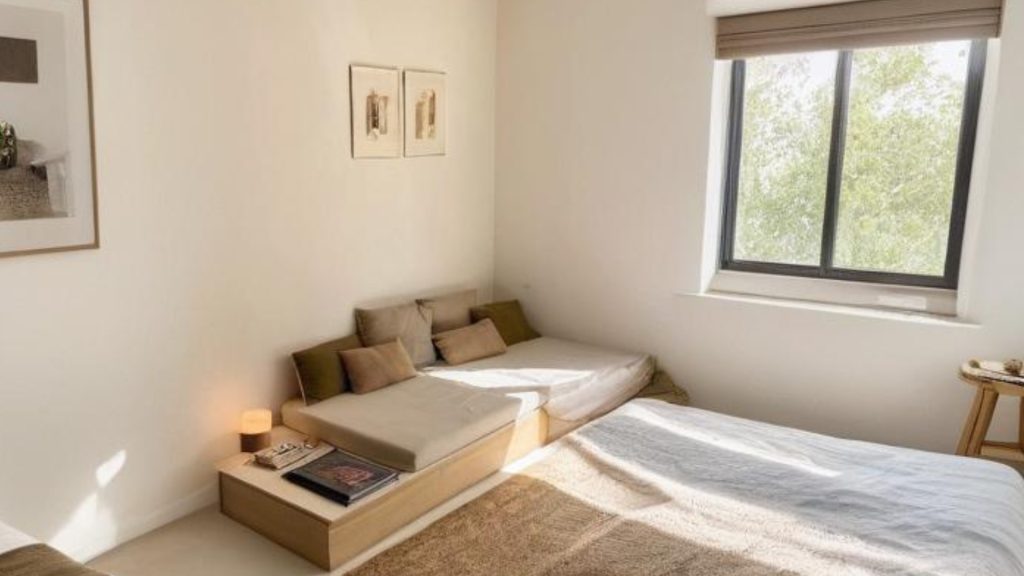
Floor cushions are a staple in Japanese and Indian homes alike. They encourage grounded seating, help with posture, and add warm-snug comfort.
- You can use cotton or linen covers in muted shades like stone grey, soft beige, or moss green.
- You can place them near a window or a corner to create an instant chill-out zone.
- You can pair with a soft floor lamp or paper lantern for warm lighting.
3. Replace Loud Prints with Textured Neutrals
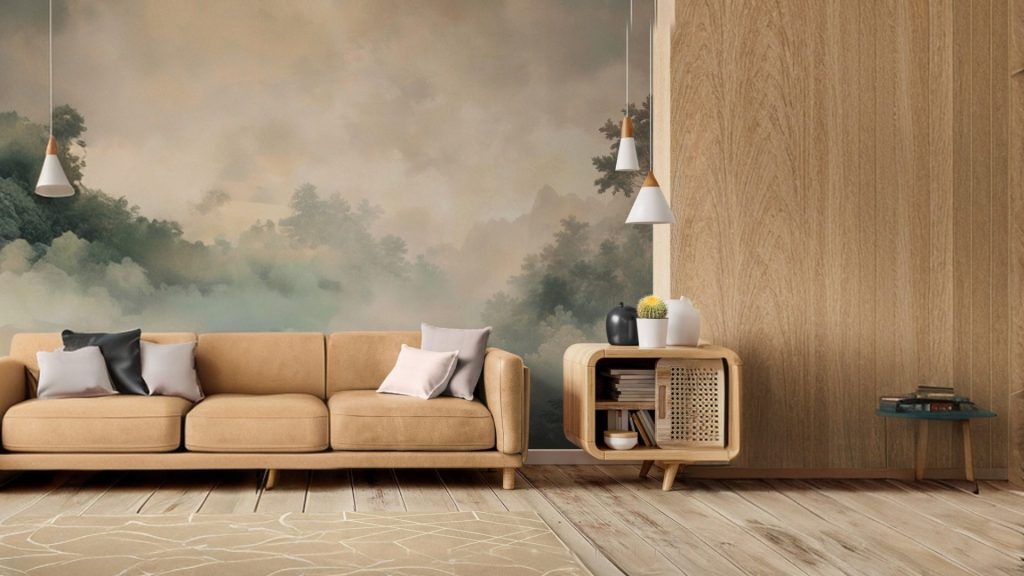
You do not need to repaint every wall or buy all-new upholstery. You should try swapping bold prints and bright colors with textured, neutral alternatives.
- You can replace heavy-patterned curtains with handwoven cotton or linen drapes.
- Switch bright cushion covers for textured fabrics in off-white, ochre, or sage green.
- You can add a jute rug or cane basket to soften the room.
4. Small Indoor Water Feature or a Zen Garden Tray
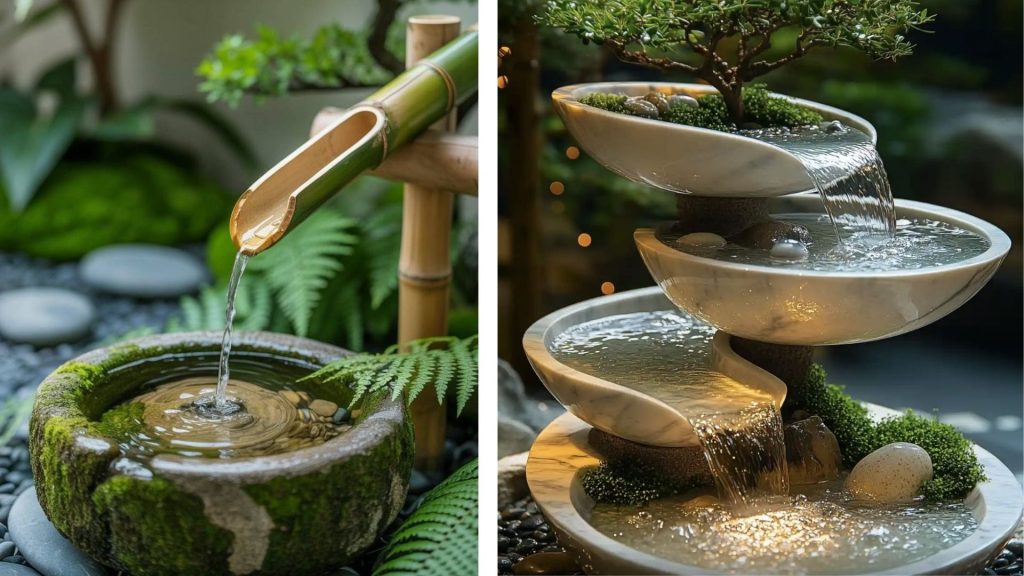
You don’t need much, just a little water element or a Zen tray can instantly create a calming corner.
- You can try a compact indoor fountain or a ceramic bowl with floating petals and a tealight.
- Set up a Zen garden tray with sand, pebbles, and a mini rake. It is perfect for your study or living room shelf.
- You can even keep a small brass urli filled with water, flowers, or essential oils for a more Indian touch.
Mistakes to Avoid When Designing a Zen Home
It is understandable that a Zen-inspired space might seem simple, but it’s easy to get carried away or miss the essence. This style revolves around a mindset, and is not vague. To achieve this home decor style to its fullest efficiency, you must avoid these common mistakes to keep your home feeling genuinely calm and grounded:
1. Overloading with decorative Zen items
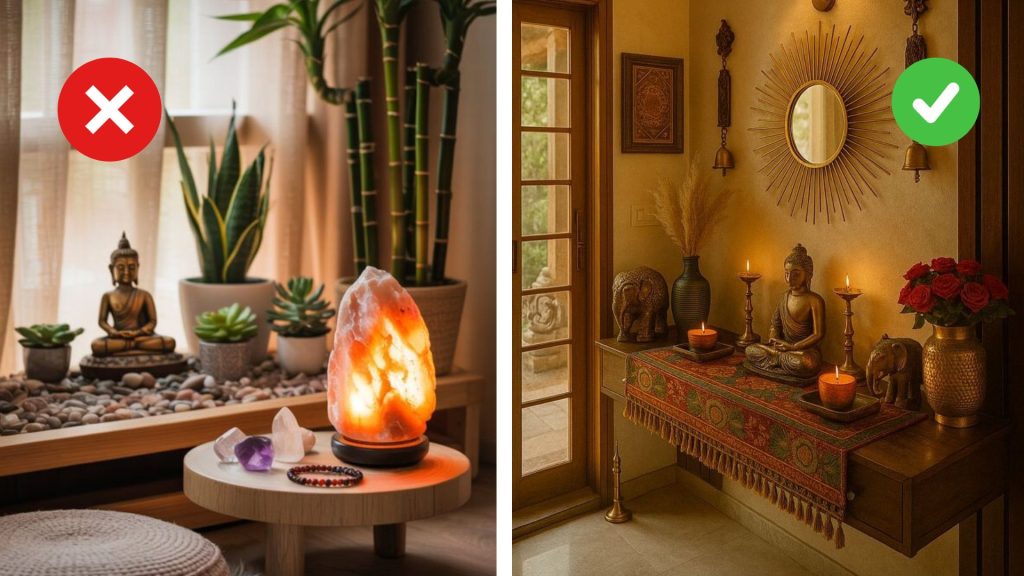
Ironically, buying too many Zen themed items like Buddha statues, pebbles, incense stands, or bamboo fountains can defeat the purpose. A few intentional pieces are enough. Let each item have meaning or function. Otherwise, it becomes clutter with a Zen label.
2. Mixing too many materials or colors

Zen spaces thrive on harmony and balance. If you use too many textures (glass, metal, marble, and jute), you can create visual noise. You must stick to 2-3 calming tones like white, beige, or grey. You must choose natural materials like wood, stone, or cane for cohesion.
3. Confusing minimalism with emptiness
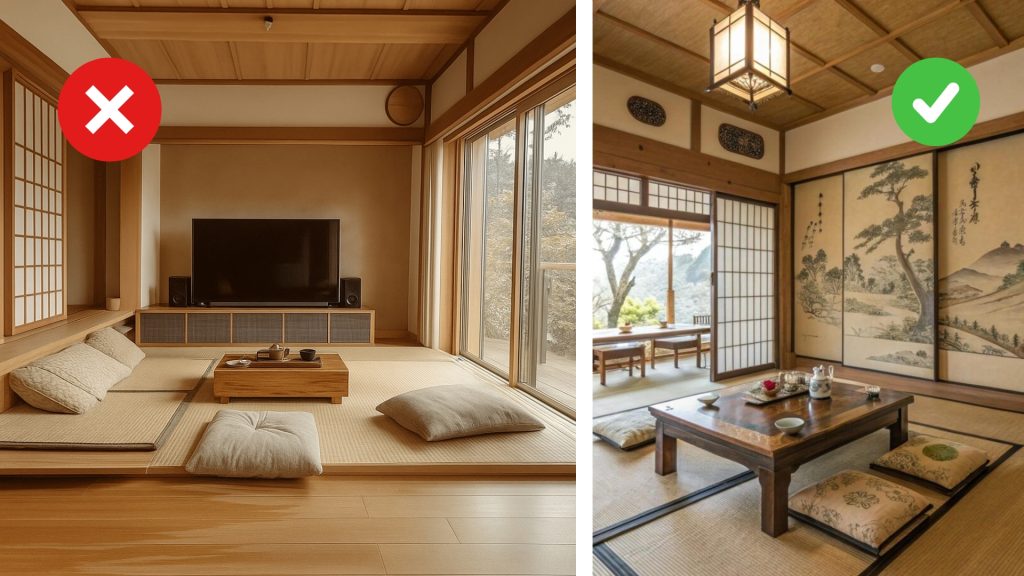
Zen doesn’t mean stark or sterile. It means simplicity with soul. You should avoid tripping away too much. Your space should still feel warm, functional, and lived-in, not bare or cold.
4. Ignoring lighting and ventilation
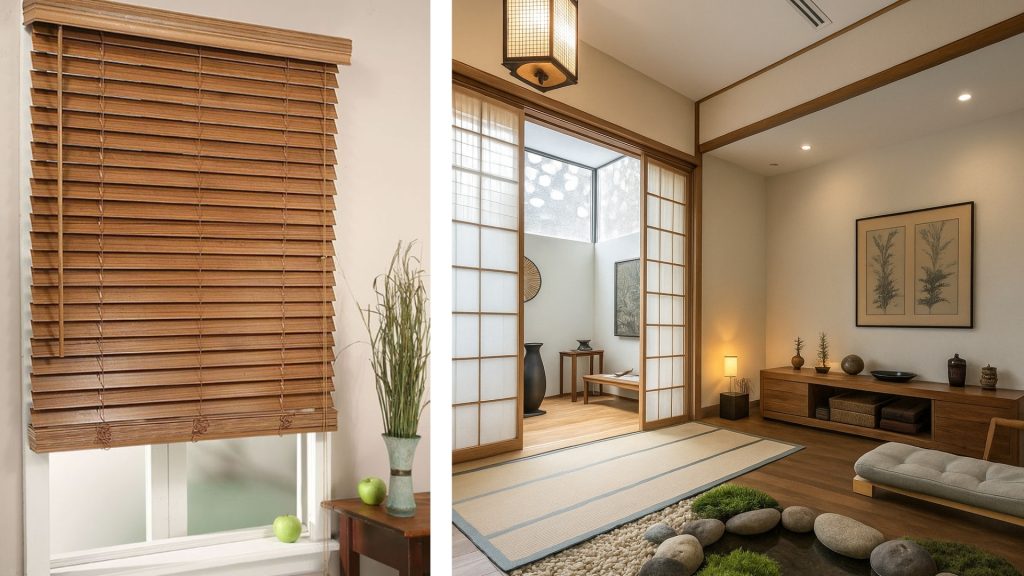
Natural light and airflow are central to Zen design. Rooms that are poorly lit or closed off can feel heavy, no matter how minimal the decor. You should keep windows clear, use sheer curtains, and add floor lamps or wall sconces with soft, warm light.
Why Choose Zen Interiors in Today’s Busy Life?
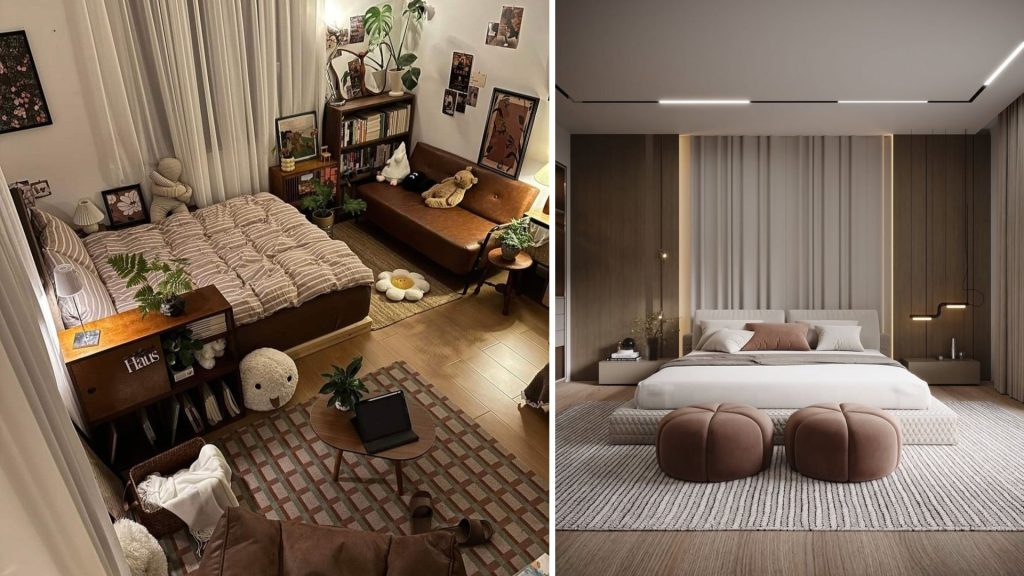
In an age of over-stimulation, constant notifications, crowded spaces, and endless to-do lists, Zen interiors offer something we all crave, a breather. Here’s why they’re more relevant than ever:
1. Mental Clarity and Calm
An organised, well-balanced space gives your mind a moment to pause. Zen interiors remove distractions, which helps reduce anxiety and overwhelm. Whether you’re working from home or just trying to unwind after a long day, a peaceful environment supports emotional well-being.
2. Easier to Maintain
Less stuff obviously means less cleaning. You don’t need to constantly tidy up with thoughtful design and minimal surfaces. Hidden storage, open spaces, and fewer decorative pieces make everyday upkeep a breeze.
3. Promotes Mindful Living and Conscious Consumption
Zen encourages you to buy and keep only what you truly need or love. Instead of chasing trends, you invest in quality, sustainable items that last longer, and feel better to use. It’s a lifestyle shift towards intentional, mindful choices.
Find Your Own Zen Space with Us!
Zen philosophy undoubtedly inspires our belief in mindful, peaceful spaces, although our true expertise lies in turnkey home interior design. We offer end-to-end solutions that translate every decor style and inspiration into your lived reality. Our process encompasses meticulous space planning, expert material selection, and custom styling, which guides you smoothly to a home that is profoundly effective and tasteful for Indian living.
FAQs
1. What is the fundamental idea behind a Zen style home interior?
The core idea of a Zen interior is to create a sanctuary of calm and simplicity. It goes beyond just aesthetics and focuses on cultivating a feeling of peace and mindfulness within your home. This is achieved by intentionally eliminating clutter, both visual and physical, to allow your mind to rest. The goal is for your living space to feel like a retreat from the busyness of the outside world.
2. I love the look of Zen design, but my home needs to be functional and lived-in. How can I achieve this balance?
A common misconception is that Zen interiors are stark or uncomfortable. The true principle is "nothing in excess." It's about mindful curation, not emptiness. You can absolutely have a functional home by choosing multi-purpose furniture and incorporating ample hidden storage like woven baskets or built-in cabinets. This keeps daily necessities close at hand while maintaining the clean, uncluttered lines that are central to the style.
3. My living room gets a lot of natural light. What color palette works best for a Zen living space?
You have a wonderful advantage, as natural light is a key element in Zen design. To complement it, a neutral color palette is most effective. Think of soft, earthy tones like off-whites, warm beiges, gentle greys, and muted taupes. These colors act as a calm backdrop, allowing the changing quality of the natural light to become a feature of the room itself, enhancing the overall serene atmosphere.
4. What are some essential natural materials to use in a Zen bedroom?
To create a truly restful Zen bedroom, focus on bringing in textures from nature. This would include materials like natural wood for the bed frame and flooring, linen or cotton for bedding and curtains, and perhaps a soft wool rug. The tactile quality of these organic materials adds warmth and depth to the minimal color scheme, making the space feel grounded and inviting, which is perfect for promoting relaxation and sleep.
5. Is there a place for decorative objects and art in a minimalist Zen interior?
Yes, but the approach is one of intentionality. Instead of many small items, the philosophy encourages selecting one or two meaningful pieces to display. This could be a single piece of art with negative space, a simple ceramic vase, or a carefully chosen natural object like an interesting stone or a branch. Each item is given room to breathe and be appreciated, which prevents visual noise and aligns with the minimalist principle of living with only what you find beautiful or useful.
6. How important is lighting in achieving a Zen aesthetic?
Lighting is absolutely crucial and is considered one of the most important elements. The goal is to create a soft, diffused glow that mimics natural light and avoids harshness. This is often achieved through layered lighting, using a combination of indirect ceiling lights, floor lamps with paper or fabric shades, and perhaps some discreet LED strips. The concept of "wabi-sabi," which finds beauty in imperfection, can also be expressed through lighting with handmade or irregularly shaped lampshades that cast interesting, gentle shadows.
7. Can I incorporate technology into a Zen-style room without disrupting the calm?
This is a modern challenge, and it can be managed with careful planning. The key is concealment and minimizing visual distractions. You might consider hiding the television behind a sliding panel or within a cabinet when not in use. Keeping wires meticulously organized and out of sight is also essential. The aim is to allow technology to serve its function without letting it dominate the space or interrupt the tranquil, minimalist environment you have created.
8. I've heard the term "wabi-sabi" connected to Zen design. What does it mean?
Wabi-sabi is a Japanese concept that is deeply intertwined with Zen aesthetics. It is the art of finding beauty in imperfection, asymmetry, and the natural cycle of growth and decay. In your home, this could mean choosing a wooden table with a visible, unique grain pattern, a hand-thrown pottery bowl with an irregular glaze, or a linen textile that softens and wrinkles gracefully over time. It encourages us to appreciate authenticity and the quiet beauty of things that are modest, humble, and natural.

